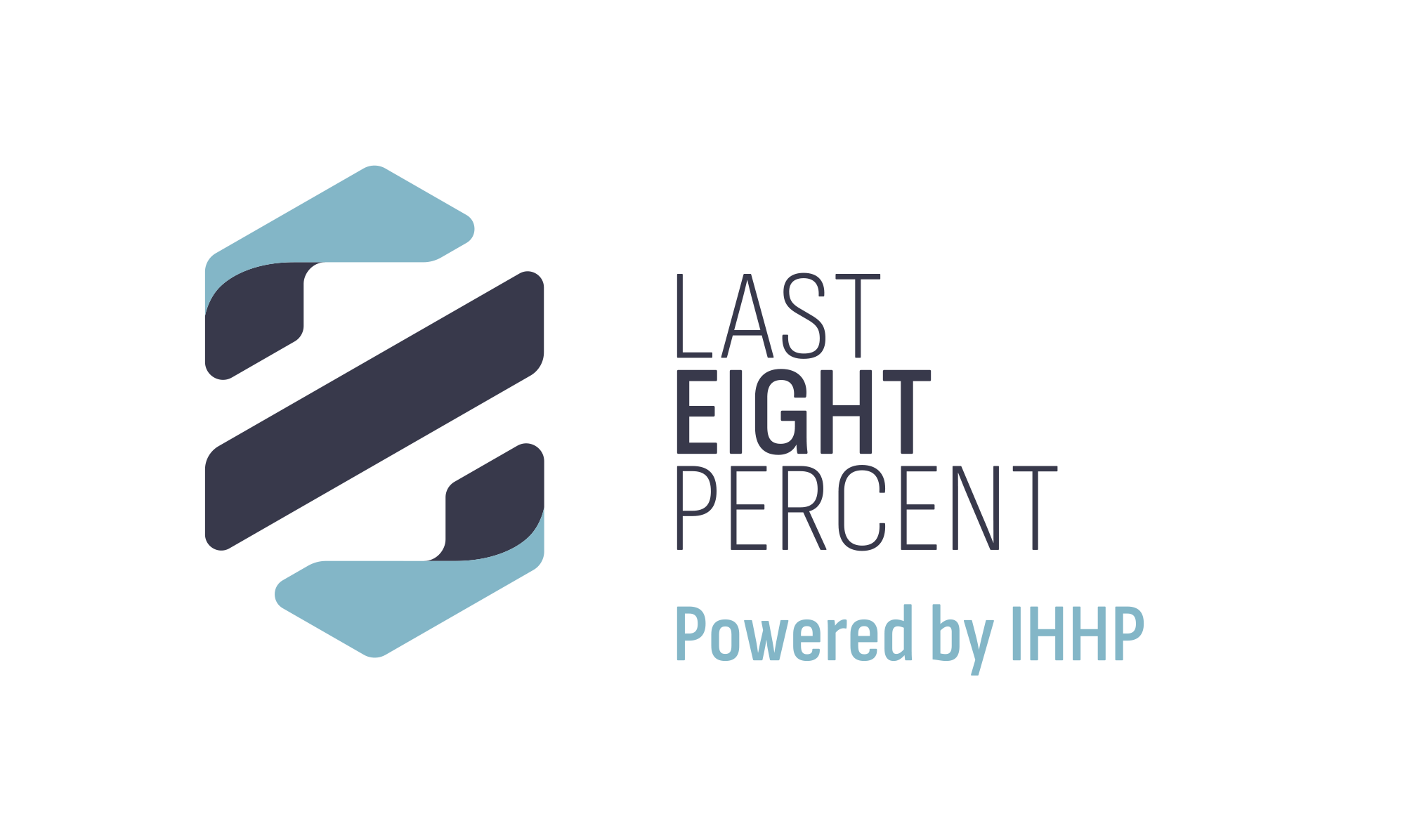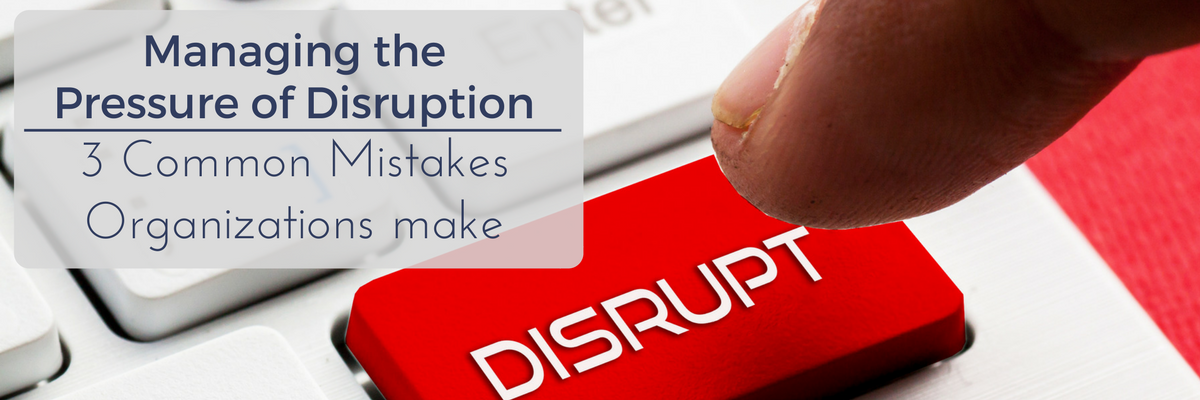In September 1961, a woman from Queens, NY, called a group of friends over to her house and confessed that eating cookies was her obsession. Her name was Jean Nidetch, she weighed 214 pounds and with that first admission, she discovered that one of the most effective keys to weight control was “empathy, rapport, and mutual understanding”. Her discovery resulted in a seventy-pound weight loss and one of the most successful weight-control organizations in the world.
Weight Watchers formed as a company in 1963 and has since had an enormously successful run, building its brand and making a big difference for millions of people around the world. In 2012, they held a dominant position in their marketplace and felt on top of the world. They were not too concerned with what some were calling the looming ‘digital age’. After all, how could digital disruption affect an organization so integrally built on human connection?
Weight Watchers wasn’t the first and certainly won’t be the last to believe that because it was not in the technology space, it didn’t have to worry about being digitally disrupted. How wrong they were.
In our experience, working with large organizations who are facing the pressure of disruption, we see three mistakes made that limit an organization’s ability to be successful.
Mistake #1: Digital disruption won’t happen to us; we are not a technology company.
Most people don’t understand digital disruption. They see it as a technology related phenomenon. It isn’t. Digital disruption is affecting organizations in every industry, in every part of the world. It is powered by two sources:
- New digital technologies—social, mobile, analytics, big data, and cloud—that allows new products to be developed more rapidly and in a more scalable, intelligent and connected way than ever before. Ten years ago, only large corporations with sizable resources and access to significant computing power could build the kind of products and offer the kinds of services that today, organizations can build at a fraction of the cost and in record time. A good example is the difference Amazon Web Services (AWS) is making for organizations big and small. AWS enables a company of virtually any size, to compete with the largest companies in the world, by allowing them to procure extensive infrastructure for their critical applications at a fraction of the cost. Barriers, in others words, have been significantly brought down allowing new players to act as disruptors.
- New digital consumers who are engaging with products and services in completely different. This is the challenge Weight Watcher’s faced.
While 2012 was a big year for Weight Watchers, it was around this time that their customer’s behavior began to substantially change because of new tools available to them. People began to diet differently, relying less on strict plans and more on loose, do-it-yourself approaches, characterized by ‘wearables’ and apps.
 Fitbit and Jawbone, two of the more popular fitness wearables, launched their trackers in 2012. These products used digital tools to engage with customers in new low-cost ways to upend the Weight Watchers business model. For instance, Lose It, a new slimming app, operated by only eight people in 2015, took away 13 million Weight Watchers customers alone and was part of what dropped Weight Watchers revenue of $1.83 billion in 2012 to $1.28 billion in 2014 – worrying the stock market that they could not make upcoming debt repayments.
Fitbit and Jawbone, two of the more popular fitness wearables, launched their trackers in 2012. These products used digital tools to engage with customers in new low-cost ways to upend the Weight Watchers business model. For instance, Lose It, a new slimming app, operated by only eight people in 2015, took away 13 million Weight Watchers customers alone and was part of what dropped Weight Watchers revenue of $1.83 billion in 2012 to $1.28 billion in 2014 – worrying the stock market that they could not make upcoming debt repayments.
The point is that disruption can happen to any kind of company at any time at rates faster than ever before. Any leader not paranoid today about what some students in Palo Alto might do to disrupt their business model is not just irresponsible, but playing a highly risky game.
Mistake #2: Not Putting the Customer at the Center of Everything
One of the seismic shifts new digital technologies has enabled is the use of customer input, feedback and sophisticated data analytics to continuously iterate product to adapt to their customers need. For instance, the Lose It app creates a customized weight loss plan based on the information that their customers entered. A customer can track their food intake and exercise as well as set goals they would like to meet. Lose It then tells the customer more about the food they’ve eaten such as which foods are helping their progress towards their goals and which are not, in real time. These new apps made their products indispensable to their customers by putting the customer at the center of everything they did.
At the same time, Weight Watchers and other organizations would say: “Hold on. We are customer centric too”. And, by intention, they were. But without some of these new technologies, older, more analog organizations like Weight Watchers were stuck attempting to meet client’s needs with small incremental improvements or by decreasing costs and were losing out in a big way. Weight Watchers’ revenue decline tracked the growing popularity of wearable fitness devices and their apps. Their seemingly impenetrable business model was being dismantled at a pace that shocked both them and the market.
Mistake #3: Not Understanding That Succeeding in the Digital Economy is More About People than Technology.
The qualities that, at one time helped analog organizations like Weight Watchers be successful in their marketplaces do not work today. Previously, increasing quality and process improvement were valued and risk was not. For instance, many organizations used a Six Sigma approach that focused on reducing process output variation by measuring the number of defect parts per million. This is still a completely useful approach for some organizations in certain circumstances but not if you are attempting to be innovative and move fast against disruption.
Organizations need to be designed differently today, with agility and networks valued over hierarchy. They need to have the capability to both exploit their current business model (where quality improvement does matter) and explore new business models and approaches. They need to become great testers: moving from the usual linear, process oriented way of reducing risk to trying more things, moving faster and learning as the path to reducing risk. They require more organizational flexibility. They need to attempt new approaches to meeting their customers’ needs – again, conducting cheap, rapid experiments – and, frequently, failing along the way. They need to think about how they attract and retain talented employees – as the world has become much more about thinking than doing.
None of this, however, can occur unless an organization has the managers and leaders who can execute on this new approach.
This requires a different set of skills and capabilities, starting with the management of pressure.
Why pressure? Managers and leaders now face double the pressure they previously experienced. Today, they need to both perform – meet their quarterly and yearly targets by exploiting their current business model and transform – help their organizations adapt to their changing environment at a pace never before experienced. This amounts to twice as much pressure as they are used to and requires the ability to manage themselves in a vastly different way.
For instance, managers and leaders need to be able to manage the pressure associated with a higher frequency of failure and disappointment that comes from increased testing and experimentation. This is difficult for people who are used to flourishing in a slower moving, more process driven environment that rewarded quality and perfectionism.
Managers and leaders will need to see the disruption they face as an opportunity and not a crisis. This critical mindset change – the foundation of thinking under pressure – is essential for success in this era. An opportunity mindset drives creativity and appropriate risk taking whereas crisis thinking is characteristically rigid and not nearly as open to partnering and collaboration. Success will not come from being insular and closed off to how an organization can work in new ways with suppliers or even competitors.
Engagement
And finally, managers and leaders are going to need to engage their teams and build a high-performance culture, one characterized by high trust, autonomy, and meaningful work if they are going to get the kinds of discretionary effort and risk taking from their people necessary to succeed. This will require a culture distinguished by constant and continuous feedback and in-the-moment coaching, similar to the high pressure Olympic, NBA, and NFL environments we at IHHP work in.
Feedback
This high level of feedback and coaching requires the ability to engage in what we call Last 8% conversations – the more difficult but also most vital part of a conversation under pressure. If a manager or leader is not able or willing to step in and have these types of conversations, any new attempts at being agile and adaptive and customer centric loses all traction.
This is probably the biggest mistake most organizations are making: they get excited by the technology and all it can do – and they should be – but don’t realize it is people who are required to take the risk to make it all happen. They don’t understand the increased pressure their people are experiencing in this transformation. They think they only need to teach their people ‘change management’ and they will be fine to deal with this new reality. They are wrong. The speed of change and the way pressure is affecting their managers and leaders’ brain is unlike what they have experienced before. Ironically, to be successful in this new age will become less about technology and more about how managers and leaders manage their brain and their behavior as well as of those around them. Do they understand themselves? Do they understand what they do under pressure? How they react when things don’t go as planned during a ‘test, measure, learn’ approach to product development? How their reactions impact others and how that can cause their people to take less risk, diminishing innovation? Or how their people might be feeling more and more anxious about new digital competitors? No new digital technology can make up for a team that is paralyzed by the fear of taking risks (and being imperfect) or unable to manage their anxiety when a disruptor surfaces. This is the ‘game within the game’ that needs to be won if an organization is going to be able to take the pressure of disruption and turn it into opportunity. Getting their culture and people side right in order to embrace the oncoming disruption.
Back to Weight Watchers
These new skills were especially important for Weight Watchers in 2015. If their leaders did not have the skills to manage the anxiety of losing market share effectively, they were at risk of getting stuck in crisis thinking and they would never have been able to respond and adapt to the disruption they experienced. Faced with declining revenue they made some courageous decisions and set about the task of re-inventing themselves. They invested significantly in online programs and meetings, mobile apps to track performance and a substantial social media marketing presence. They topped it off with an even bigger bet: taking valuable time and resources to try and persuade Oprah Winfrey and her global brand presence to jump on board. They were successful and won Oprah over, creating a powerful partnership. The market has been paying attention: its shares have been on a steady incline this year, up around 112% so far in 2017, a testament to the new program’s success.
Like many organizations today, Weight Watcher consumers’ behavior substantially changed because of the new tools available to them. And it will continue to change as new technology evolves and gains traction. The question is whether Weight Watchers will change along  with it? Will they continue to put their customers and their behaviors at the center of everything they do? Will they build a culture that can adapt to changing customer behavior and ever-increasing technological disruption? Will their managers and leaders be able to manage the double pressure of disruption and perform and transform and still come up with new ways of helping their customers achieve their goals? If they win this internal game, this ‘game within a game’, they have a chance. If they don’t, they will join the ranks of Kodak and Blockbuster as another example of an organization that failed to change and was left behind.
with it? Will they continue to put their customers and their behaviors at the center of everything they do? Will they build a culture that can adapt to changing customer behavior and ever-increasing technological disruption? Will their managers and leaders be able to manage the double pressure of disruption and perform and transform and still come up with new ways of helping their customers achieve their goals? If they win this internal game, this ‘game within a game’, they have a chance. If they don’t, they will join the ranks of Kodak and Blockbuster as another example of an organization that failed to change and was left behind.

